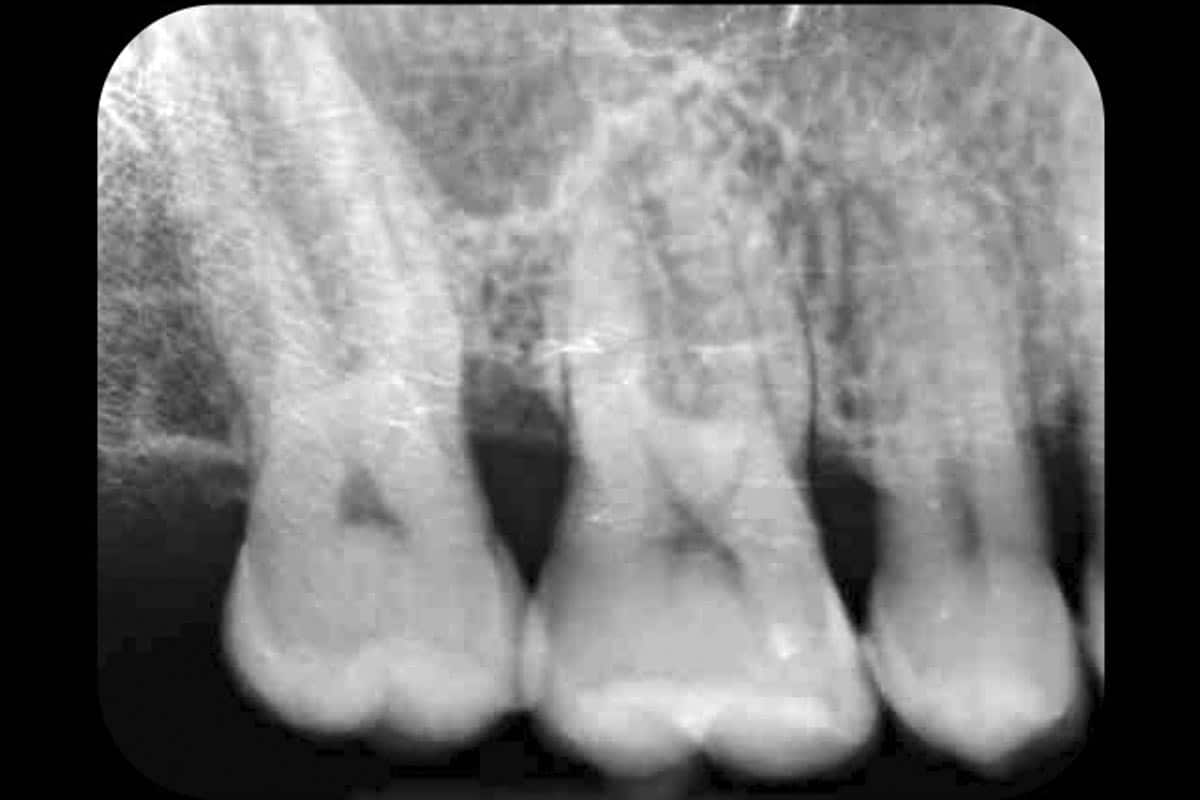Periodontal defects
Reconstruction of tooth-supporting tissues
The treatment of periodontal bone defects such as intrabony defects or furcation defects is an important therapeutic aspect of periodontal therapy to preserve teeth. Guided Tissue Regeneration (GTR) and enamel matrix derivative (EMD) have been considered the ‘’gold standard’’ in regenerative periodontal therapy 1.
Surgical approaches for the treatment of gingival recessions
Soft tissue defects such as gingival recessions can be treated with a variety of recession coverage procedures with the coronally advanced flap (CAF) and modifications thereof being the most commonly used technique. Performed in conjunction with an autologous connective tissue graft (CTG) the stability of the clinical outcome can be increased. Alternatives to autologous soft tissue transplants are xenogeneic soft tissue grafts.


Bone defects – Intrabony/furcation defects
In terms of clinical attachment level gain and probing pocket depth (PPD) reduction, a surgical approach (open flap debridement) has been proven beneficial for the treatment of deep periodontal intrabony pockets (PPD ≥ 6 mm)2. The defect morphology is crucial for the success of the treatment. Self-contained intrabony defects are narrowed by predominantly intact osseous walls (i.e. 3-wall defects) and are indicated for a regenerative therapy with either a barrier membrane (GTR) or enamel matrix derivative (EMD) alone.
Guided Tissue Regeneration (GTR)
According to GTR, following flap elevation and granulation tissue removal, a membrane is placed between the gingiva and cleaned root surface to cover the defect area completely. The flap is repositioned and sutured tension-free. Hereby, cells originating from the intact periodontal ligament is given time and space to repopulate the root surface resulting in regeneration of the lost periodontal structures.

Enamel matrix proteins
Enamel matrix derivative (EMD) has been shown to be effective in sites of > 6 mm PPD associated with a radiographic vertical bone loss > 3 mm and to induce the de novo formation of root cementum, periodontal ligament and alveolar bone as evidenced by human histological data3. In situations with wide contained or non-contained defects (2- or 1-wall defects), EMD can be used in conjunction with particulate bone grafts.
Soft tissue defects
Gingival recessions are a result of the migration of the gingival margin apically, resulting in root exposure. The condition is often associated with high plaque accumulation, root caries development and hypersensitivity. A variety of recession coverage procedures have been proposed with the coronally advanced flap (CAF) and modifications thereof being the most commonly used technique4. For the treatment of multiple adjacent recessions, the modified coronally advanced tunnel (MCAT) technique has become an attractive minimal invasive approach.
CASES
Science
Education
- Dr. Jochen TunkelGermany
Edutainment
- Dr. Dragana RakasevicSerbiaDr. Miguel StanleyPortugalProf. Anton SculeanSwitzerlandDr. Marius SteigmannGermany




















